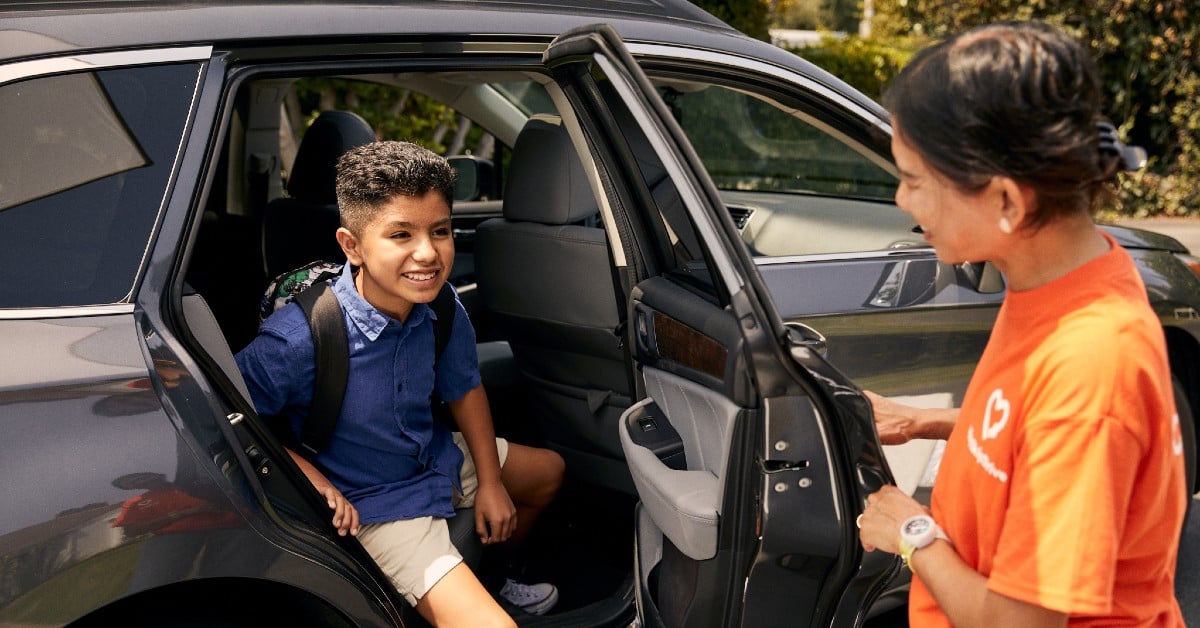Transportation for homeless students
Written by Karen Sampson
 All American students have a right to attend school, but various inequities prevent certain youths from getting the most out of their education. In truth, our nation’s most vulnerable students face significant roadblocks just getting into the classroom day after day. From grueling, long and complex commutes to trying to catch up after a pandemic-necessitated, at-home learning environment favored students with more resources, educational equity remains out of reach for many American youths who need it the most.
All American students have a right to attend school, but various inequities prevent certain youths from getting the most out of their education. In truth, our nation’s most vulnerable students face significant roadblocks just getting into the classroom day after day. From grueling, long and complex commutes to trying to catch up after a pandemic-necessitated, at-home learning environment favored students with more resources, educational equity remains out of reach for many American youths who need it the most.
In this article, we’ll explore transportation’s pivotal role in the lives of students experiencing homelessness. We’ll also dive into the McKinney-Vento Act and touch on how a reliable ride to school can change everything for vulnerable students.
Understanding the McKinney-Vento Homeless Assistance Act
The McKinney-Vento Act is a federal law designed to ensure students experiencing homelessness receive the same educational opportunities as students who have secure housing. The McKinney-Vento Act offers these students a variety of rights, including the right to:
- Receive transportation to and from school and extracurricular activities at no cost
- Remain enrolled at their school of origin
- Enroll in school, even if students cannot present proof of residence or immunization
The McKinney-Vento Act defines homeless children as youths who do not have a “fixed, regular and adequate nighttime residence.” Since this definition is somewhat subjective, local homeless liaisons employed by school districts typically determine which students meet that criteria. In that sense, the true first step to ensuring vulnerable students receive the education they deserve is a swift, appropriate determination of eligibility.
The McKinney-Vento Act underscores what school districts, educators and researchers already know to be true: That working toward educational equity means that students experiencing homelessness need laws, resources and liaisons on their side.
Student homelessness is a growing issue
According to the National Center for Homeless Education (NCHE), more than 1 million students attending public schools in the U.S. experienced homelessness during the 2020–2021 school year. From 2004 to 2021, the number of students experiencing homelessness increased by 63%. The NCHE also indicates that students experiencing homelessness are often members of additional vulnerable subgroups, including students with disabilities, students who are still learning the English language and students who are migratory.
What’s more, experts agree that lingering impacts of the COVID-19 pandemic, which led to learning loss for many students, has only hampered school districts’ abilities to identify, assist and secure support for students experiencing homelessness.
Related: The increase in student homelessness — and what schools can do about it
How transportation removes roadblocks — and opens doors — for students
When students face challenging commutes plagued by inconsistent public transportation or weather-ridden routes, students don’t just struggle to get to school — many times, they don’t get there at all. Research shows that long, complex commutes to school create challenges for students that increase the chances they’ll transfer out of a school that suits them to select one closer to where they live. But that’s not always what’s best for the student.
However, when students receive reliable, comfortable and safe transportation to the school where they’re most likely to succeed, they’re simply receiving the same opportunities that students with more resources enjoy. The McKinney-Vento Act aims to ensure that every student can access the best education available without worrying about how to pay for it — or how to get there.
According to the Act, when a student’s eligibility for federal funds is confirmed, that student’s transportation needs should be arranged at once. The mode of transportation should not simply be what’s least expensive or least burdensome for the school district; instead, it should reflect what’s best for the student. If possible, the student’s parent or guardian should also be consulted during this time.
With the help of the school district — and at the mandate of federal law — that student should also be offered transportation to any extracurricular activities that interest them. Once again, this exemplifies educational equity because students with resources can join clubs, after-school groups and team sports that appeal to them whenever they’d like. Offering students experiencing homelessness the agency to fill their days with activities that enrich their lives isn’t just a nice thought — it’s essential. And it’s only fair.
Providing the transportation and support that all students deserve
At its best, the McKinney-Vento Act — and the teachers, liaisons, school district employees, parents, guardians and lawmakers who enact and defend it — help our most vulnerable student populations unlock the education and opportunities they deserve.
Unfortunately, not every commute is created equally. Mitigating factors such as budget cuts to public transportation, an ongoing and worsening bus driver shortage, hybrid school schedules and pandemic-related challenges mean that many school districts are struggling to get students to school every day. Unfortunately, it’s the students who have the fewest resources who suffer the most.
While public transportation is a cost-effective way to get students experiencing homelessness to and from school, these commutes are often hours-long, taxing and inconsistent.
Whenever possible, students should be offered the smoothest, safest and most consistent transportation available to them. After all, when a student is worried about changing subways or getting caught in the rain or waiting for a bus that’s never on time, it’s that much harder for them to focus on what the rest of their peers are focused on: school.
Interested in partnering with HopSkipDrive to fulfill your McKinney-Vento transportation needs for students experiencing homelessness?
.png?width=230&height=70&name=logo_2x%20(1).png)



